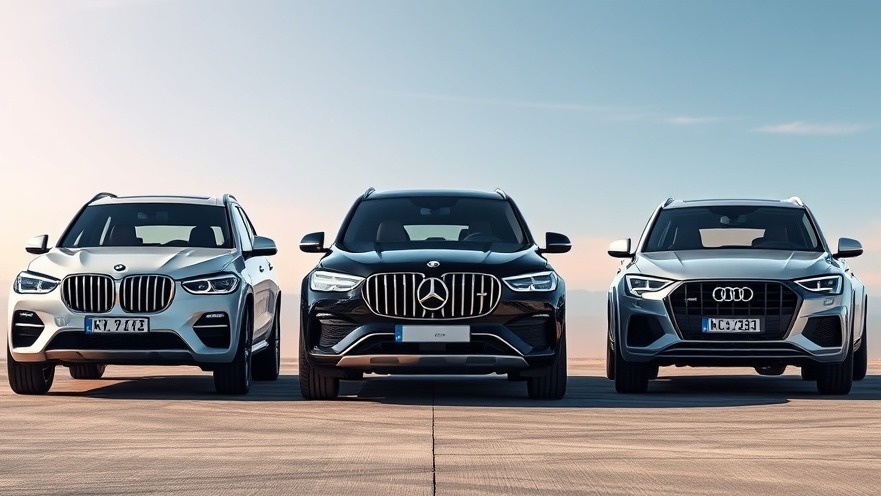
Luxury SUVs Explained: The Big Three
When comparing the Audi Q5, BMW X3, and Mercedes GLC 300, a question often arises: which one stands out as the best small luxury SUV? This analysis provides insight into their performance, comfort, and overall value, aiding potential buyers in making informed decisions.
In '2025 Audi Q5 vs BMW X3 vs Mercedes GLC 300 || Which Luxury SUV Wins?', the discussion dives into the competitive landscape of luxury SUVs, exploring key insights that sparked deeper analysis on our end.
Performance and Drivetrain Comparison
All three SUVs—the Audi Q5, BMW X3, and Mercedes GLC 300—come equipped with turbocharged 4-cylinder engines. The Q5 leads slightly with 268 horsepower, while both the GLC and X3 offer 255 horsepower. Despite these differences, all three vehicles accelerate from 0-60 mph in around six seconds, which is more than adequate for daily driving.
The standout in drivetrain performance, however, is the BMW X3. Renowned for its reliable 8-speed automatic transmission, it not only offers the smoothest ride but also superior fuel economy, achieving approximately 35 miles per gallon. In terms of overall driveline quality, the X3's reputation for durability surpasses that of the GLC and Q5, which lag slightly behind in refinement.
Driving Comfort and Handling
In everyday driving scenarios, the Audi, BMW, and Mercedes seem comparable in comfort and handling. However, subtle distinctions exist. The Mercedes tends to offer a slightly smoother ride thanks to its softer suspension system, making it a great choice for leisurely drives. Meanwhile, the BMW X3 excels in sportier, more aggressive handling, making it ideal for those who enjoy a dynamic drive. The Q5 strikes a middle ground, balancing comfort and sportiveness.
Interior Quality and Technology Reliance
Turning to the interiors, potential buyers may find them disappointing considering the luxury brand names. All three models rely heavily on touchscreen infotainment systems, featuring a somewhat steep learning curve for users. This reliance on technology may be convenient but lacks the classic tactile controls that many drivers prefer.
While all three SUVs boast visually impressive interiors, the use of cheap plastics in various components raises questions about true luxury. The GLC might visually appear the most luxurious, yet upon closer inspection, materials used in the interior may not fully justify the price tags that start at approximately $50,000 USD.
Cost Considerations: Lease vs Purchase
Given the high cost of maintenance and the average reliability of European luxury vehicles, leasing might be the more prudent choice compared to purchasing. Should you choose to own one, it's critical to keep in mind that these SUVs often come with increased repair costs once warranties expire.
Alternative Options: Exploring Beyond Luxury SUVs
For those who might be wary of high maintenance costs or are seeking better value, alternatives exist. The Lexus NX offers a more reliable and cost-efficient experience while still delivering comfort and style. Similarly, the Mazda CX-5 Turbo serves as an appealing crossover option that combines affordability with quality features and performance.
Final Thoughts
The ultimate question remains: should you opt for the BMW X3, Audi Q5, or Mercedes GLC? It appears that the X3 edges ahead due to its top-tier performance and reliable quality. The Q5 closely follows, while the GLC lands in third place. However, individual needs, preferences, and leasing opportunities may shift the balance for different buyers.
 Add Row
Add Row  Add
Add 




Write A Comment